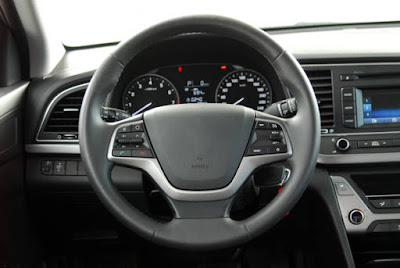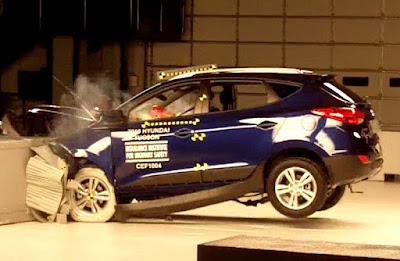What is power steering, do you know? What is its type hydraulic steering system, electric steering system and electrohydrolic steering system and configuration of power steering system
vào
30 May, 2020
ALL ABOUT POWE STEERING SYSTEM
CLASSIFICATION OF POWER STEERING SYSTEM AND KEY COMPONENTS OF POWER STEERING
 |
| Credit: Google images |
What is power steering
In modern vehicles power steering system helps drivers steer the vehicle by reducing steering effort needed to turn the steering wheel, and making it easy for the vehicle to turn.
In modern vehicles power steering system helps drivers steer the vehicle by reducing steering effort needed to turn the steering wheel, and making it easy for the vehicle to turn.
Hydraulic or electric controles are added to the steering mechanism to control,
so the driver needed less effort to turn the steered wheels when driving at certain speeds, and reduce the physical effort needed to turn the wheels.
In power steering systems have no direct mechanical connection to the steering linkage
Classification of power steering
Hydraulic power steering system
Electric power steering system
Electrohydrolic steering system
Hydraulic power steering system
Electric power steering system
Electrohydrolic steering system
Hydraulic power steering system
Hydraulic power steering systems work by using a hydraulic system to apply the force to the steering wheel vehicle's steered (usually front) road wheels.
Hydraulic power steering systems work by using a hydraulic system to apply the force to the steering wheel vehicle's steered (usually front) road wheels.
The hydraulic pressure typically applied from a rotary vane pump driven by the vehicle's engine.
A double-acting hydraulic pump applies a force to the steering gear, which in turns the roadwheels. The steering wheel use to operates valves to control flow to the cylinder.
The driver applies more torque to the steering wheel and column, then more fluid allow through the valves from the cylinder, so more force is applied to steer the wheels.
To measuring the torque steering wheel has a torque sensor – a torsion bar at the lower end of the steering column.
 |
| Credit: Google images |
Electric power steering system (EPS)
Electric power steering (EPS) or motor-driven power steering (MDPS) uses an electric motor in place of hydraulic system to assist the driver.
Electric power steering (EPS) or motor-driven power steering (MDPS) uses an electric motor in place of hydraulic system to assist the driver.
Sensors sence the position and Torque of the steering column, and a actuator module applies required torque via the motor, which connected to either the steering gear or steering column.
This allows variable amounts of assistance torque to be applied depending on driving conditions.
*In the event if component failure or power failure that causes the failure to provide assistance, the mechanical linkage serves as a back-up or secondary system
 |
| Credit: Google images |
Electrohydraulic Steering
Between the hydraulic and electric type of power steering, there is a hybrid of the two this systems called electrohydraulic. It's operation is like a hydraulic-assist system, in this the hydraulic pressure is created by an electric motor, instead of driving the pump by the engine's crankshaft.
Components of power steering
POWER STEERING PUMP
The power steering pump provides the hydraulic pressure for steer the vehicle.
The power steering pump is driven by a belt attached to the crankshaft pulley.
When the power steering pump's pulley rotates then vane assembly inside pump ring located inside the pump.
Pressure is created by compressing the fluid between the vanes and the surface of the pump ring.
Flow valve control the pressure and maintain the output.
Hydraulic power steering system is two types
submerged
and
non-submerged.
and
non-submerged.
Both are similar in working,
only difference between them is the type of fluid reservoir used. In submerged type of pump contains the pump and fluid reservoir in single unit.
only difference between them is the type of fluid reservoir used. In submerged type of pump contains the pump and fluid reservoir in single unit.
A non-submerged uses a fluid reservoir which is located away from the pump.
Power Steering Pump
The power steering pump is the accessory drive belt
To develop fluid pressure in the high side power steering hose to the input side of the power steering control valve.
To develop fluid pressure in the high side power steering hose to the input side of the power steering control valve.
Rack and Pinion
The rack and pinion is the unit which translates driver steering's rotary input into straight line movement of the front wheels and guides in turning.
steering input shaft is a pinion gear. This gear is meshed with the steering rack.
As the steering wheel is turned, the pinion rotates and turns the rack in the direction desired.
 |
| Credit: Google images |
RACK AND PINION SYSTEM USED WIDELY BY MODERN CAR'S
Steering Coupler/universal joint
This is coupler joint that allows the steering wheel to rotate without being inline with the column, haft and steering column are not in perfect alignment, but at a slight angle to each other and coupled with this coupler
Tie Rod Ends
These are components that attach at the end of the steering rack to the
and allow the motion of the rack to be translated into turning of the front wheels.
and allow the motion of the rack to be translated into turning of the front wheels.
Power Steering Hoses
There are two main power steering hoses,
high side
low side.
Both these are attached to the rack and pinion with threaded pattern.
High side hose is attached to the power steering pump with a threaded pattern, and low side hose moves over a small pipe
The high side hose carries power steering fluid under pressure to the rack to provide the power assist to steering inputs.
The low side hose carries low pressure fluid back to the pump/reservoir.
 |
| Credit: Google images |
Thanks:- Team mechanic Adda












